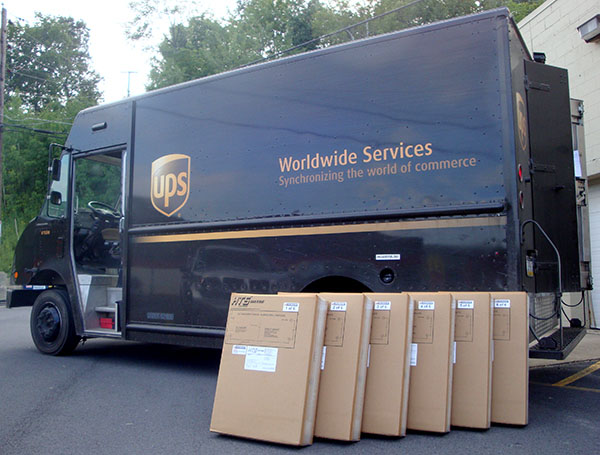UPS is prepared for what it expects to be an active Peak Season

Based on comments made by its executives on yesterday’s second quarter earnings call, Peak Season prospects for global transportation and logistics bellwether UPS appear to be solid.
That is a good thing, considering the strong economic outlook, driven by ongoing e-commerce activity, strong retail sales, and consumer spending, among other factors.
A key theme of this call a year ago centered on UPS being properly compensated for its services for this period, given it is typically the most hectic time of the year. It stands to reason that has not changed, with Big Brown’s peak season surcharges in place and the company noting last year that the surcharge is needed to compensate for the additional cost that UPS incurs during peak with volume increases and the temporary capacity enhancements needed to meet service levels.
While the surcharges received a lot of attention last year, a key takeaway from yesterday’s call was peak planning.
“We expect to have a good peak season,” said Richard Peretz, UPS CFO, on the call. “However, the calendar works against us with two less operating days in December. At the same time, we're bringing on significant capacity, adding planned cost to the fourth quarter, and opening several large new facilities before peak that will provide benefits going into the future.”
And Juan Perez, UPS Chief Information and Engineering Officer, noted that with those two less operating days compared to a year ago, UPS is working on various plans to adjust for that change.
What’s more, Perez said UPS is adding what he called significant sorting capabilities for this year’s peak in the form of more than 350,000 packages per hour of additional sorting capabilities.
“We're also planning to hire additional seasonal helpers. We are planning on introducing better technology again to facilitate the movement of packages across the network, two applications that come to mind are the mobile delivery app that simplifies the onboarding and the delivery of packages for all the seasonal helpers we bring on, and also the use of technologies such as Dynamic Sort Instructions that once again, make things easier for people to be able to sort packages across the network,” said Perez. “By this peak, our Saturday operations will be at full deployment, and that will further help us smooth out the volume throughout the peak period creating additional capabilities.”
While customer collaboration is essential throughout the entire year, Kate Guttman, UPS Chief Sales and Solutions Officer, explained that it is especially key during Peak Season which is a market-constrained period on certain days, with UPS continuing to work with customers on joint strategies to smooth out demand, or moving volume into lower and lighter days.
“And when I say that, I mean moving volume into lower lighter days, and many of them are identifying self-gifting that goes on that they're able to modify transit times with,” said Guttman. “So it benefits all, leads to higher service, and also less overtime for their DCs so they can staff more consistently. So these long-term relationships we have with our customers really lends to that collaboration.”
Managing capacity, specifically on the aircraft side, is, and remains, a key component of Peak Season planning, which was stressed by Jim Barber, UPS COO, on the call.
“The aircraft and how we run Peak Season is just the normal part of Peak Season planning,” he said. “We should have the [aircraft] capacity, obviously, to meet demand. [We] do a really great job of connecting with the customer so that we can really forecast that, which is becoming, in this world…. a very different world than we grew up. So forecasting the demand, getting it right, where it’s going to come from s a very important part of the process.”
While UPS is solidly focused on Peak Season preparation, having the required staffing levels could prove to be a challenge, according to Jerry Hempstead, president of Hempstead Consulting.
“They plan to add significant seasonal staff in the fourth quarter as they have in the past, as does FedEx,” he said. “They may find the challenge this year is locating people willing and available to work. Everywhere I go now there are ‘hiring’ signs up competing for the type of labor UPS attracts. Today I saw signs in Starbucks, McDonalds, the grocery store and Walmart. UPS, Amazon and FedEx will need 100,000 people for the fourth quarter. Do you know anyone healthy that can lift 70 pounds that’s out of work?”

Article Topics
Latest in Logistics
LM Podcast Series: Assessing the freight transportation and logistics markets with Tom Nightingale, AFS Logistics Investor expectations continue to influence supply chain decision-making The Next Big Steps in Supply Chain Digitalization Under-21 driver pilot program a bust with fleets as FMCSA seeks changes Diesel back over $4 a gallon; Mideast tensions, other worries cited Four U.S. railroads file challenges against FRA’s two-person crew mandate, says report XPO opens up three new services acquired through auction of Yellow’s properties and assets More LogisticsAbout the Author
Subscribe to Logistics Management Magazine

Find out what the world's most innovative companies are doing to improve productivity in their plants and distribution centers.
Start your FREE subscription today.
April 2023 Logistics Management

Latest Resources














